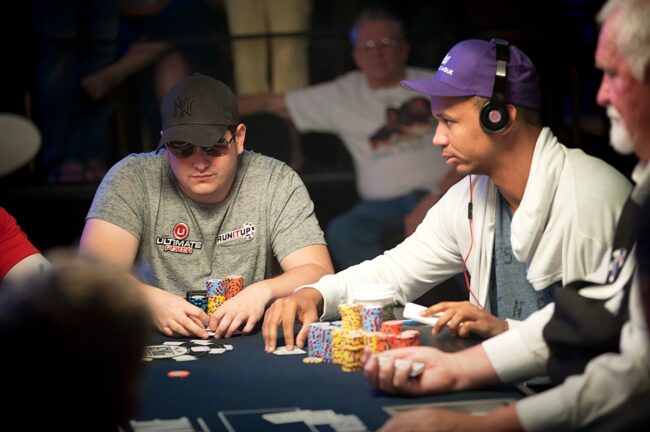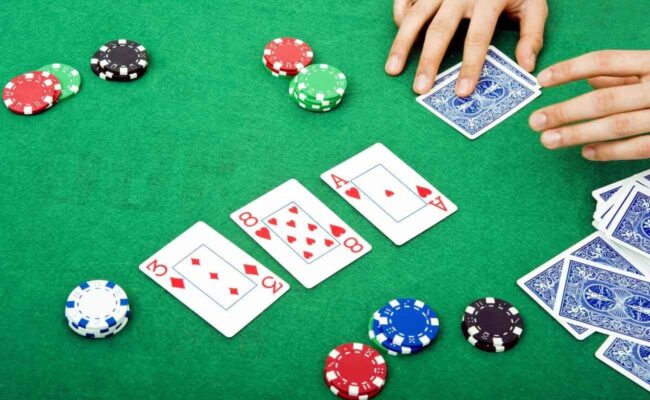Reading your opponents in poker is not about guessing. It’s about observing patterns, behaviors, and small shifts in posture or timing.
Spotting a bluff or recognizing weakness can turn a losing hand into a winning strategy. Most players don’t lose because of bad cards—they lose because they miss what’s happening at the table.
Below, we’ll break down the habits that reveal your opponent’s hand strength, show you how to stay calm under pressure, and teach you to play the player, not just the cards.
Key Highlights
- Spotting bluff patterns can give you a massive edge in tight games.
- Facial tension often reveals discomfort with a weak hand.
- Weak bets and fast checks usually signal low confidence.
- Smart players exploit timing tells—learn to read and reverse them.
- Recognizing betting inconsistencies exposes hidden information.
- Online poker requires different bluff-spotting skills than live games.
The Core of Poker Psychology

Poker is war without blood. When the cards are down, psychology takes over. Every player leaks some information—most don’t even realize it. Their voice, their eyes, the way they touch their chips—all of it tells a story. Learn to pay attention.
You don’t need to be a mind reader. Just be present and sharp. Realize that poker isn’t just numbers. It’s behavior, confidence, and fear playing out hand after hand.
Early Tells and Immediate Red Flags
The moment a player looks at their cards, the game starts. Look for the shift in breathing. Notice how quickly they peek and how soon they act.
If they act too fast, they’ve usually already made a plan. That’s a danger sign. It often means they hit something big. On the other hand, hesitation doesn’t always mean weakness. Sometimes it’s staged.
Watch for:
- Eyes darting toward chips right after seeing cards
- Shoulders rising or posture stiffening
- Suddenly going silent when usually chatty
These signs alone aren’t proof. But they stack up fast.
Spotting Bluff Patterns and Weaknesses

Bluffing is a controlled risk. Weak players overdo it. Strong players sell a story. Learn the difference by studying how the hand was played—not just the bet itself.
A bluff often happens when:
- A player bets big after missing obvious value bets in earlier rounds
- The betting doesn’t make sense with the board texture
- They’ve been quiet for a while, then suddenly get aggressive
You’re not always going to be right. But if you look for logic and consistency in the play, you’ll spot when someone’s just making noise.
To sharpen your skills, try testing what you’ve learned in real-time matches. One effective way is to read more about betting environments that allow both risk and reward control. The Parimatch app lets you place bets on sports and casino games with zero setup fees. Use it to train your instincts across different formats—your poker reads will improve faster than you think.
The Power of Timing Tells
Time is a weapon. Smart players know how long a decision should take. If a bet comes too quickly or too slowly, it’s often a sign of misdirection.
Here’s a rule: Natural decisions take consistent time. Forced ones feel off.
An instant check on the river usually shows they’ve given up. A long pause followed by a huge raise? That’s often a bluff trying too hard. Patterns matter more than moments.
Tip: Don’t react immediately to strange timing. Stay composed, count three slow seconds, then act.
Posture, Voice, and Hand Movements
People reveal truth through micro-movements. A nervous player fiddles with chips, adjusts their collar, or covers their mouth. Confident players stay still, composed, and calm.
Here’s what to notice:
- Are their fingers loose or tight on the chips?
- Do they smile when bluffing or go completely blank?
- Is their voice steady or a bit higher than usual?
The mistake many players make is watching the cards too much. Watch the people. Their bodies speak more clearly than their bets.
Betting Patterns: What They Actually Mean
Weak players bet strong when they’re scared. Strong players bet weak when they’re trapping. Betting is the clearest language in poker—don’t ignore it.
Look for:
- Repeated small bets on strong boards. This often means they want to see the showdown without investing too much.
- Sudden large bets on dry boards. This is usually an effort to scare.
- Big bets out of nowhere when the player missed every previous opportunity. That usually screams bluff.
Always ask yourself: What story is this bet telling? If it doesn’t add up, they’re probably lying.
Online Poker Bluffing Clues

In online poker, you lose the benefit of body language. But that doesn’t mean you’re blind.
Track:
- Speed of action
- Consistency in bet sizes across different hands
- Patterns after bad beats (some tilt and overplay next hand)
Most online bluffers tend to overbet or use odd bet sizing. If someone shifts from $6 bets to $24 out of nowhere, question it.
Use note-taking tools if available. Build profiles. Over time, you’ll read their habits just like you would in person.
Emotional Tilt and When to Exploit It
Players who bluff too often usually don’t handle pressure well. After a major loss or a missed draw, their emotional control slips. They may become impatient, chase losses, or force plays that don’t make sense. That’s your opportunity.
If a player just lost a huge hand, expect them to try and “win it back” fast—often with a reckless bluff. The same goes for when they miss a flush or straight draw they were clearly invested in. Frustration drives them to push hard, hoping to scare others off and recover in one bold move.
Another sign of tilt is a sudden shift in behavior. If someone who’s been quiet starts talking more or throwing out aggressive comments, they’re not relaxed—they’re unbalanced. Tilt isn’t always loud, though. Sometimes it shows in their urgency, erratic bet sizes, or overcompensation.
Apply pressure in those moments. But stay controlled. Let them unravel on their own. You don’t need to rush. Tilt makes them predictable, and predictable players lose.
Don’t Forget to Watch Yourself

If you’re reading others, know they’re reading you. Cover your own tells. Mix up your play. Keep your bets consistent, no matter your hand strength.
Avoid:
- Always checking when weak
- Always raising with top pair
- Staring too long at strong hands
Train your face and body. Even online, vary your pace. Don’t become predictable.
Final Thoughts
Winning in poker is about information. The more you observe, the more control you gain. Reading your opponents doesn’t happen in one hand—it’s a habit you build every time you sit at a table.
Focus on patterns. Don’t overanalyze single actions. Stack behaviors together like puzzle pieces. Bluffers always show their cracks.
Stay calm. Stay sharp. Use what you know. And when the time’s right—call the bluff.
You’ll never see poker the same way again.
